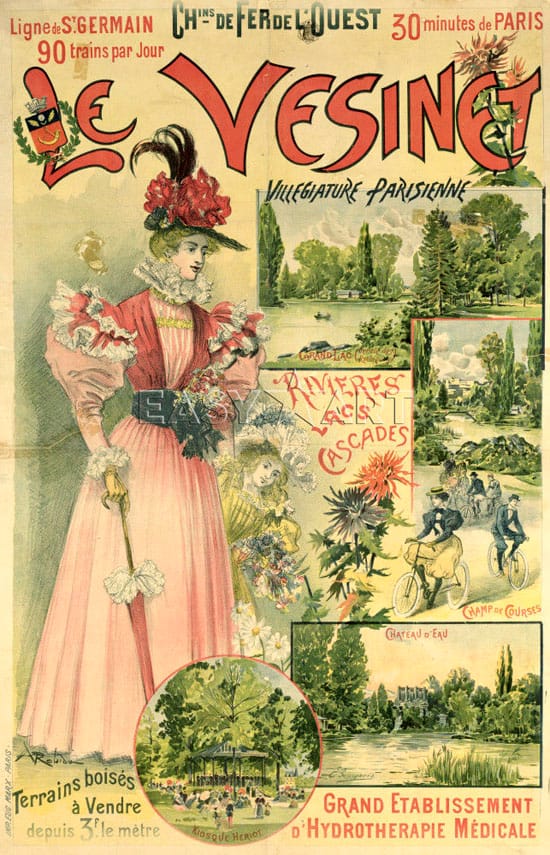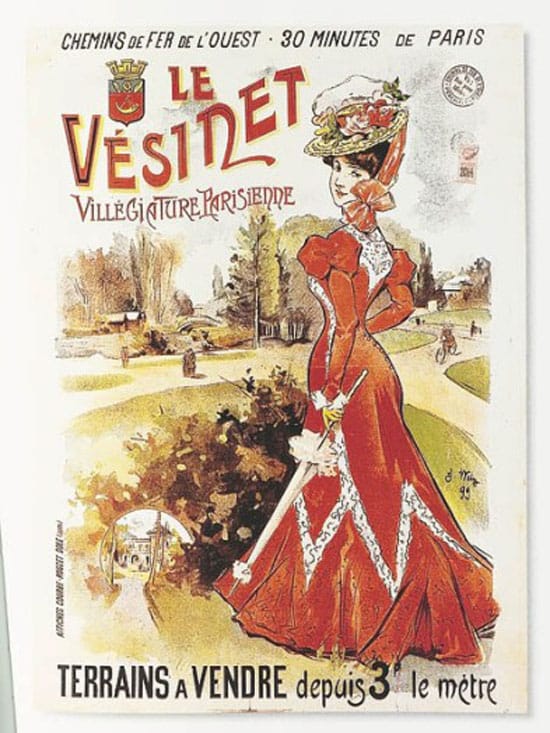Louveciennes and Le Vésinet
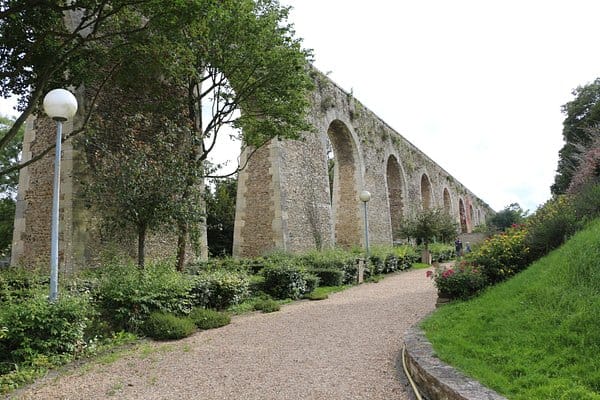
Louveciennes, on the south side of the Seine, and Le Vésinet, on the north side are now absorbed into the western suburbs of Paris. Once the railway line from Paris to St. Germain-en-Laye opened in 1848, painters, musicians, writers and dancers soon followed it out there, some of them to buy plots in one of the world's first housing subdivisions (see the real estate posters at the bottom of this page).
Le Vésinet station opened in 1862 and, three years later, Bizet moved there and became a neighbor of La Mogador (more here). In 1929, Josephine Baker bought a mansion here, the gorgeous Le Beau Chêne, and she lived there for 18 years.
Across the Seine, Alfred Sisley, the impressionist, captures Louveciennes in the 1870s - below. Anaïs Nin and Henry Miller would live in Louveciennes in the 1930s.
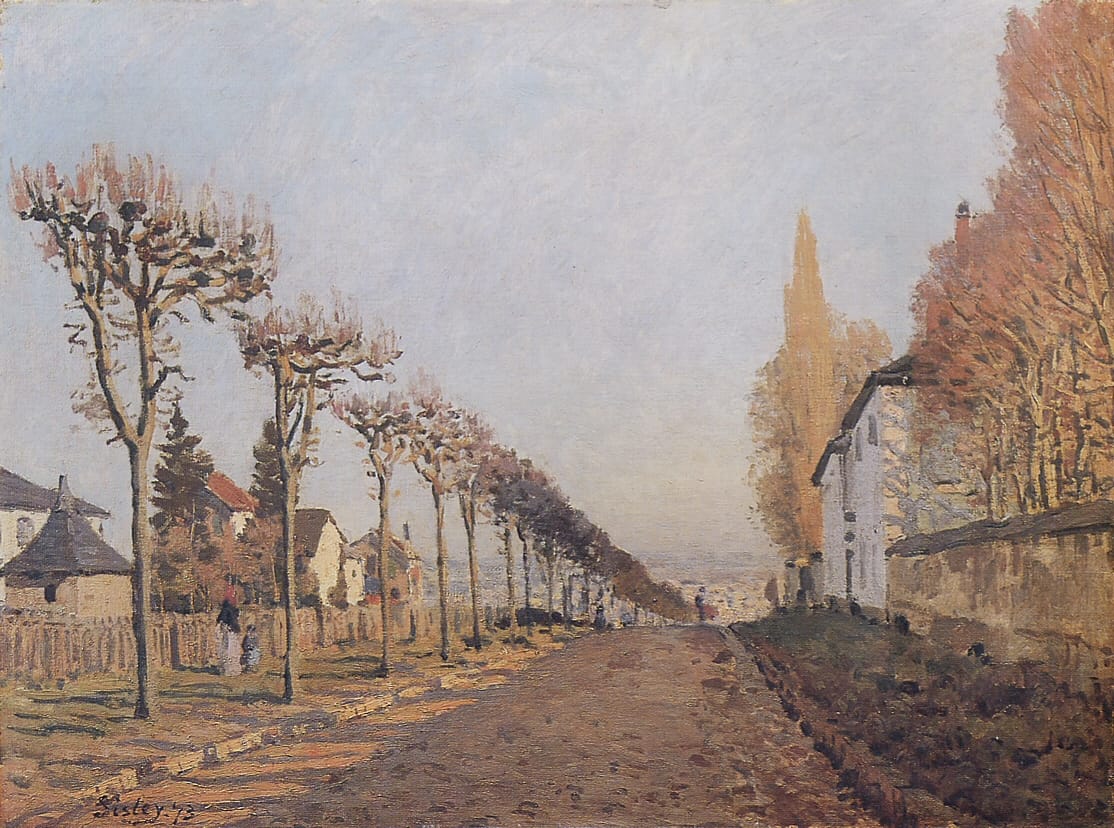
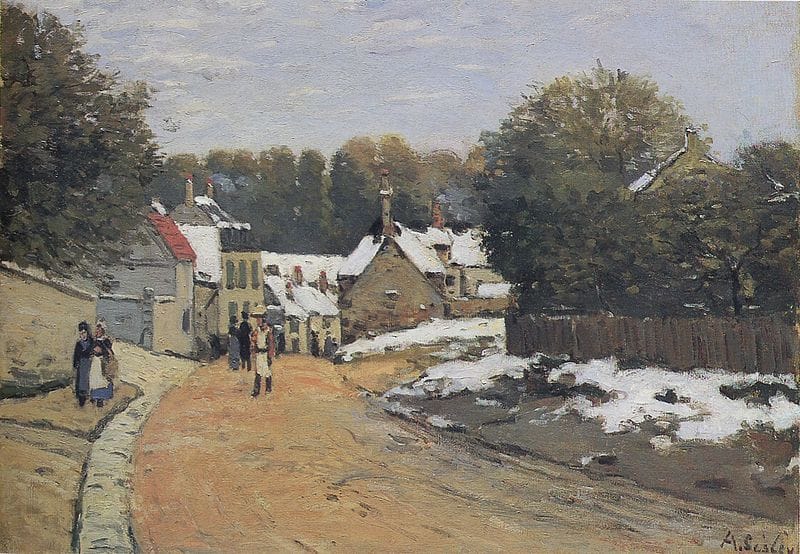
Earlier, in the early 1770's, Madame du Barry - the last mistress of Louis XV - lived in the adjacent Château de Louveciennes, commissioning the exquisite Pavillon de Musique shown below. She hired Fragonard to paint four giant wall canvasses for it, depicting the Progress of Love, but she rejected them because she thought them old-fashioned, and she allowed him to keep them. I agree with her, but she went to the guillotine in 1793; he would go onto add 10 more to the series. The paintings are now in the Frick Collection in New York.
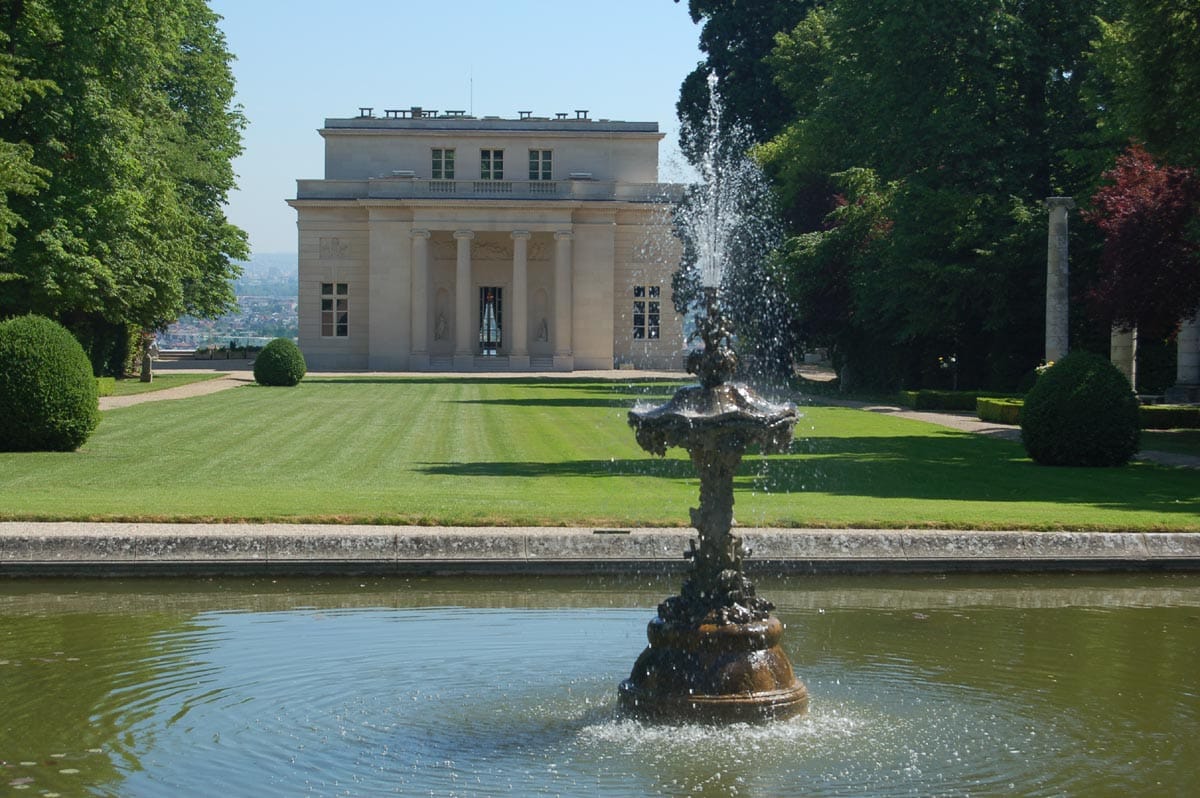
The posters below, from the late 19th century, promote the real estate for sale if you took the railroad (Chemins-De-Fer) from Paris to Le Vésinet. 90 trains a day? Le Vésinet was also a place to relax amid lakes and trees and spas sprang up offering "hydrothérapie." The most famous was La Villa des Pages, which was founded in 1890 and is still there today.
